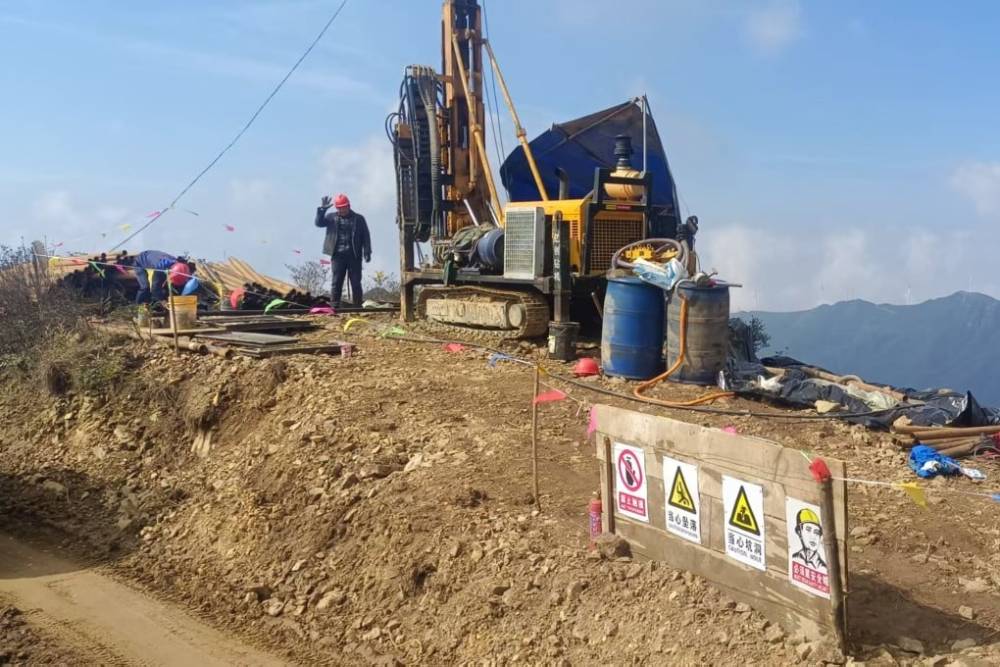
Trung Quốc: nửa đầu năm 2025 phát hiện mỏ đất hiếm lithium 490 triệu tấn
-
Trung Quốc phát hiện 38 địa điểm mỏ khoáng sản mới trong 6 tháng đầu năm 2025, tăng 31% so với cùng kỳ năm ngoái, theo Bộ Tài nguyên Thiên nhiên.
-
Trong số này, có mỏ lithium khổng lồ tại khu vực mỏ Jijiaoshan, tỉnh Hồ Nam, với 490 triệu tấn quặng lithium và 1,31 triệu tấn lithium oxide.
-
Mỏ này còn chứa khoáng sản chiến lược như rubidi, wolfram (tungsten), thiếc (tin), niobi và tantali ở quy mô từ trung bình đến lớn.
-
Ngoài ra, Trung Quốc cũng phát hiện 3,37 triệu tấn rubidi và 81 tấn vàng trong nửa đầu năm.
-
Rubidi là nguyên liệu quan trọng trong y sinh, viễn thông, pháo hoa và kính đặc biệt, trong khi vàng đóng vai trò trong điện tử và hàng không vũ trụ.
-
Đầu tư vào thăm dò khoáng sản phi dầu khí tăng 23,9%, đạt 6,69 tỷ nhân dân tệ (tương đương 932 triệu USD).
-
Nửa đầu năm 2025, Trung Quốc tăng cường thăm dò các khoáng sản thiết yếu như thiếc, bauxite, wolfram, đồng và phosphate, phục vụ cho năng lượng xanh, hàng không và chất bán dẫn.
-
Trung Quốc vẫn phụ thuộc nhiều vào nhập khẩu, đặc biệt là quặng sắt, do sự phân bố khoáng sản trong nước không đồng đều.
-
Mọi mục tiêu thăm dò trong kế hoạch 5 năm 2021-2025 đã được hoàn thành trước hạn, nhờ cải tiến công nghệ và thiết bị khai thác.
-
Trước đó, tháng 1/2025, Trung Quốc cũng phát hiện dải mạch lithium dạng spodumen dài 2.800 km ở dãy núi Côn Luân, với tài nguyên xác thực trên 6,5 triệu tấn, tiềm năng vượt quá 30 triệu tấn.
-
Lithium, còn gọi là "dầu trắng", là khoáng chất trọng yếu trong xe điện và hệ thống lưu trữ năng lượng hiện đại.
-
Trung Quốc hiện giữ khoảng 16,5% trữ lượng lithium toàn cầu, đứng thứ hai thế giới.
📌 Trung Quốc tăng tốc cuộc đua tài nguyên toàn cầu với 38 mỏ mới, nổi bật là mỏ lithium tại Hồ Nam với 490 triệu tấn quặng. Đầu tư thăm dò đạt 932 triệu USD, tập trung vào các khoáng sản phục vụ năng lượng xanh và công nghiệp công nghệ cao. Kế hoạch thăm dò 5 năm được hoàn thành sớm nhờ đổi mới kỹ thuật và thiết bị.
https://www.scmp.com/news/china/article/3317722/global-race-critical-minerals-china-identifies-dozens-new-reserves
In global race for critical minerals, China identifies dozens of new reserves
Deposit in Hunan province has an estimated 490 million tonnes of lithium ore and 1.31 million tonnes of lithium oxide, report says
Published: 10:00am, 11 Jul 2025
China identified 38 new sites of mineral reserves in the first half of this year, discoveries that are expected to help the country meet its resource security goals.
The Ministry of Natural Resources said on Thursday that the number of new mineral sites increased 31 per cent year on year during the period, and included the discovery of reserves with an estimated 3.37 million tonnes of rubidium and 81 tonnes of gold.
Rubidium is used in biomedicine, telecommunication systems, pyrotechnics and specialty glass, and gold is used, among other things, in the development of electronics and aerospace components.
In the first six months, China’s investment in mineral exploration rose more than half from a year earlier including in tin, bauxite, tungsten, copper and phosphate – all of which are critical elements in the aerospace, semiconductor and green energy industries.
Investment in non-hydrocarbon mineral exploration grew rapidly – up 23.9 per cent year on year to 6.69 billion yuan (US$932 million).
“[We] will improve basic geological work and advance strategic prospecting to further strengthen … national energy and mineral resource security,” said Niu Li, deputy director of the ministry’s geological exploration department.
Mineral reserves are vital to Beijing’s national strategic planning, industrial development and energy transition, and while they are diverse in China, they are unevenly distributed. With substantial domestic demand, the country is highly dependent on external supplies of certain critical metals, notably iron ore.
In 2011, the State Council, China’s cabinet, approved a plan to expand resource exploration, particularly in minerals used in energy, bulk commodities and strategic emerging minerals. The ministry said that those national efforts had resulted in advances in exploration technology, extraction methods and equipment innovation.
The ministry said China had met the exploration targets for most mineral types ahead of schedule under the five-year plan for 2021-2025.
One of the most recent discoveries is a super-large altered granite-type lithium deposit in the Jijiaoshan mining area in the central province of Hunan province. The site had an estimated 490 million tonnes of lithium ore and 1.31 million tonnes of lithium oxide, according to Communist Party mouthpiece People’s Daily.
The report quoted Hunan’s natural resource department as saying the deposit held medium-to-large scale reserves of strategic by-product minerals, including rubidium, tungsten, tin, niobium and tantalum.
In January, China discovered a 2,800km world-class spodumene-type lithium metallogenic belt in the Kunlun Mountains region in western China. Verified resources exceeded 6.5 million tonnes, with total potential estimated at over 30 million tonnes, state news agency Xinhua reported.
Dubbed “white petroleum”, lithium is a critical element in emerging industries such as electric vehicles and advanced energy storage systems.
China is the world’s second-biggest holder of lithium reserves, with about 16.5 per cent of the global total.
Thảo luận
Follow Us
Tin phổ biến



